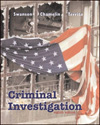One of the most important decisions a criminal investigator makes is determining whether a follow-up investigation for a particular case is needed. While a follow-up investigation is inherently necessary in some cases (i.e., rapes, homicides, suicides), factors such as the solvability of the crime, departmental policy, and availability of personnel and other resources dictate the protocol for follow-ups in other cases. Typically, follow-ups are conducted for the most serious offenses and those with potential for conclusive results. If a follow-up is needed , various sources of information from both inside and outside the department can be helpful. Internal sources such as incident and supplemental reports, jail booking reports, inventories of impounded vehicles, traffic citations, and intelligence files may provide some answers to questions that have not been addressed or were missed in the initial investigation. External sources such as internet investigations, criminal profiling, and financial analysis can also assist the follow-up process. This chapter explains the methods used in conducting an effective follow-up investigation. In addition to existing internal and external reports and documents, neighborhood and vehicle canvasses in the immediate vicinity of the crime are essential. For various reasons, witnesses and other parties who may have valuable information do not always initiate contact with the police. |



 2002 McGraw-Hill Higher Education
2002 McGraw-Hill Higher Education